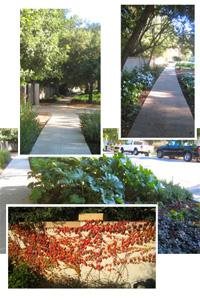Thornton Gardens Comes to Life
As the second-largest landowner in San Marino, California — the Huntington Library, Art Collections and Botanical Gardens being the first — Chuck Thornton gave back to his community in a unique way
You might imagine that the son of the eminent businessman Charles "Tex" Thornton, whose 1940s contributions in aviation helped win World War II, would lead a life of privilege and seclusion. However, in Thornton's case, that couldn't be further from the truth. As the second-largest landowner in San Marino, California — the Huntington Library, Art Collections and Botanical Gardens being the first — Chuck Thornton chose to give back to his community in a unique way.
With a house designed by the famous American architect Myron Hunt (before he designed the Huntington) and boasting a masterful garden designed by Lucille Council and Florence Yoch, the Thorntons' property is of historic significance. In an attempt to preserve the Thornton estate for posterity, the wonderfully eccentric Chuck Thornton first envisioned walling in the property and encircling it with majestic live oaks. However, a passing comment made by Barbara Paca, Ph.D., of Preservation Green, LLC prompted him to consider something different. He began a large-scale purchase of land and homes in the adjacent area with a new vision of creating a public planting, to be named Thornton Gardens, that could be enjoyed on foot or by car along the parkway that runs in front of the estate.
In collaboration, Thornton and Paca agreed on an English-California aesthetic for the ¼-mile parkway planting that would incorporate indigenous plant life. Paca uses only native plants in her designs — those that will naturalize and provide ongoing beauty over a long span of time without demanding much water or maintenance. Drawing on influences from the south of France, Monaco, the Caribbean and California, Paca chose to feature an amalgam of native flora from these similar regions, including helibore, bergenia, plumbago, camelias, crocosmia, iris, loads of gardenia and jasmine for fragrance, sporadic knockout roses for a pop of color, and yesterday, today and tomorrow (a favorite of Thornton and his wife). The sidewalk meanders through the foliage as if it were carved around the vegetation, creating surprises with the turn of each curve. Rosemary, thyme and lavender spill onto the street as 30-foot-tall native live oaks (the largest in Southern California) tower high above. In polluted Los Angeles, Thornton's use of live oaks has truly "created major lungs for his neighborhood," says Paca.
The project began with the installation of a wall — pale-yellow stucco with a stone cap — surrounding the Thornton estate as a way to define the private home from the parkway plantings. As the wall started going up, the neighbors vehemently expressed their disapproval. However, as plants began to find life in the soil, their opinions started to change. Neighbors became so fascinated with the daily progress that they often stopped to ask questions of the construction staff, causing delays to be sure, yet also a sure sign of acceptance. Ultimately, it took five years to complete Thornton Gardens.
Most private gardens are secluded from the public eye, but in keeping with the philanthropic ideals of his legendary family, Chuck Thornton chose to craft a permanent fixture of rare beauty in his Southern California community for those who dwell nearby as well as for the traveler who happens to stumble upon it. As one passer-by notes, "It just makes you smile." And in a world where that seems harder and harder to come by, we must stop and soak it in.

